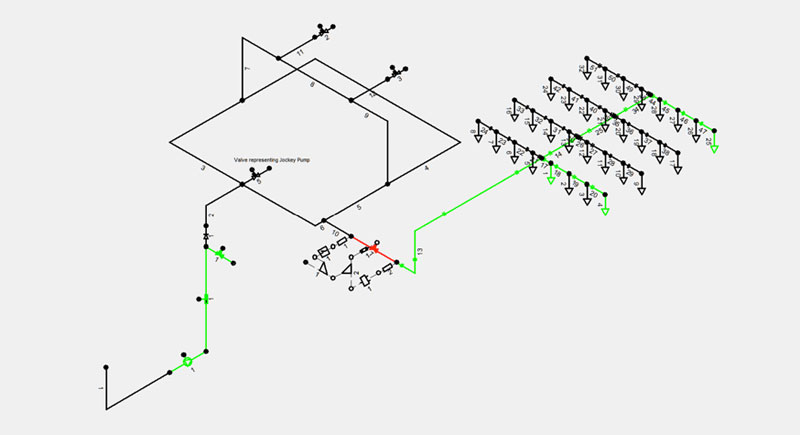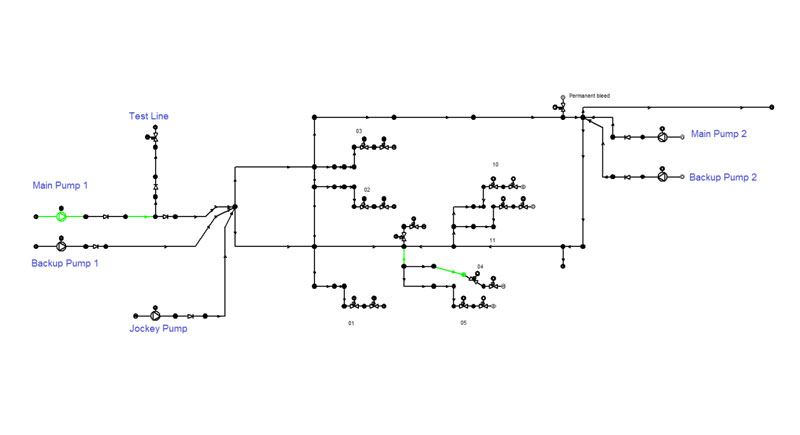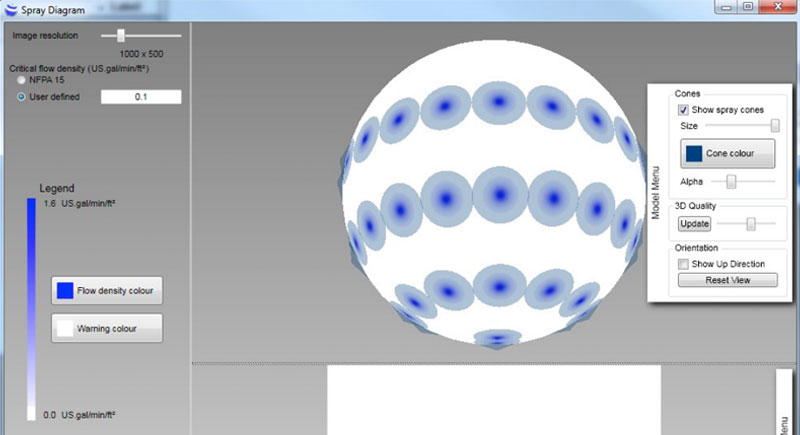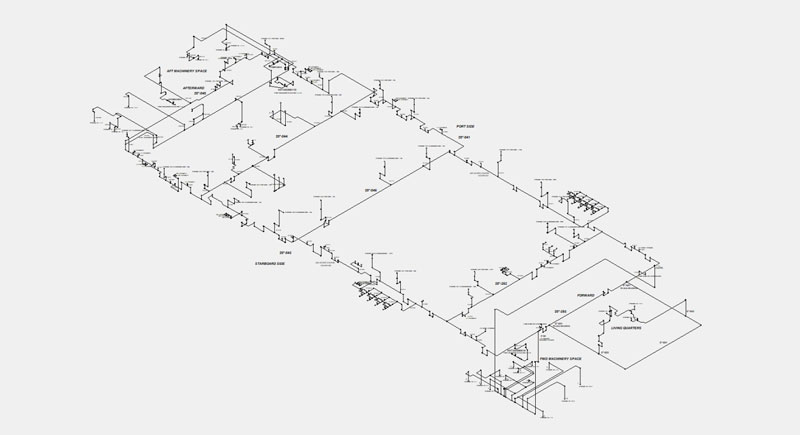Dry Pipes and Nozzles
Background
PIPENET Transient module has the following two powerful features for modelling fire protection systems:
- You can set the initial state of a pipe as being “wet” (full of fluid) or “dry” (containing no fluid). The default is “wet”. However an alternative setting of “dry” can be specified, to model pipes which are initially dry but which fill up with fluid during the course of the simulation.
- PIPENET Transient allows the direct modelling of nozzle components within the network. The Spray and Standard sub-options of Transient both offer this capability, with the specification methods differing in detail.
Taken together, these facilities offer a wide range of the network scenarios that PIPENET Transient can analyse.









